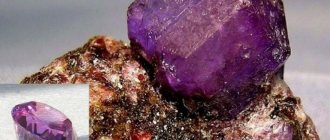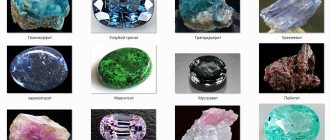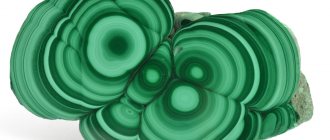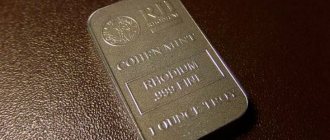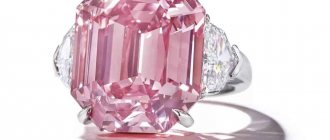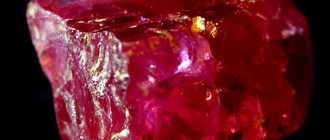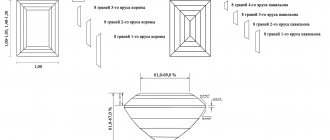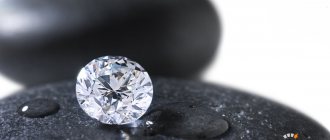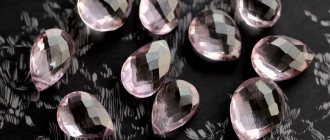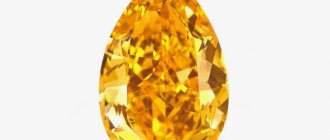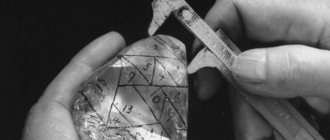Author: Pavlo Unknown
17 February 2022 20:58
Community: Facts
Tags: diamonds amethyst ruby sapphire topaz
49163
12
What in inanimate nature delights and amazes people to a greater extent than gems? Precious stones are amazingly beautiful and rare, possessing them makes a person wiser and more majestic - in any case, this is what numerous legends and beliefs associated with these most beautiful of minerals claim. But which stone is the most expensive in the world? Let's find out the opinion of experts about the cost of the most expensive stones
0
See all photos in the gallery
Serendibit, No. 4
Deposits: Sri Lanka
The rare mineral serendibite was first mined in 1902 in Sri Lanka. It got its curious name from the ancient Arabic language, which was once spoken by the Sri Lankans. "Serendib" means Ceylon.
This gemstone is known to be extremely difficult to mine. Its blue color is somewhat reminiscent of topaz, but the two stones have completely different spectroscopic characteristics.
Today, serendibite is synonymous with elegance and luxury, and is coveted by the richest people on the planet.
Semiprecious stones
Aquamarine
A transparent stone with shades of blue and green. Its price is $30-60.
Amethyst
The most expensive quartz stone on the list. The cost of the most valuable stone is from $10.
Turquoise
The mineral was found several thousand years ago. Its cost depends on the color.
Demantoid
Belongs to grenades. The cost of 1 carat is from 100 to 500 dollars.
Grossular
Very similar to demantoid. Costs from $700.
Sapphire Parparadzha, No. 3
Deposits: Sri Lanka, Vietnam, Thailand, Tanzania and Madagascar
This exquisite sapphire has received several names from jewelers. Among them are “scarlet yakhont”, “evening stone” and “mineral of dawn”. The value of the mineral lies in its orangish-pink color, which is by no means inherent in sapphires.
The name means "lotus flower" in Sinhala. Hindus believe that if you wear a padparadscha sapphire, you can achieve a state of enlightenment. Crystals of 1-2 carats are more common than larger examples.
Taaffeit, No. 2
Deposits: Sri Lanka and Southern Tanzania
Taaffeite is a mineral of incredible beauty, known only to a few connoisseurs of masterpieces of stone-cutting art. It was first discovered by the Irishman Richard Taaffe, who gave this pale pink stone his name. Later, purple, blue and greenish taaffeites were discovered and immediately recognized as rare varieties.
Today this stone is purchased at a price of about $35,000 per carat. The largest taaffeite, weighing 33 carats, was auctioned in Hong Kong in 1999.
Ten most unusual minerals
Stron-Wagner Diamond
A diamond that surprised the gem society. The stone was found in 1990 in a place called "Crater of Diamonds" in Arkansas. After processing, the weight of the diamond was 220 mg. The stone is highly rated by the American Precious Mineral Society. Experts noted that they did not find any significant defects in it. Stored at the place of discovery.
Opal Australian Olympic
The most valuable representative of the opal family. It was discovered in an Australian mining town just as it was time for the Melbourne Olympics. It lay 9 meters above ground level. The 17,000-carat stone was valued at $2.5 million. The mineral was left in its original form, without being processed. Stored in Melbourne.
American Golden Topaz
The largest processed mineral. Weighs 4.5 kg. Discovered in Brazil, in the city of Minas Gerais. It took the master two years to process the mineral. Golden topaz is kept in Washington, DC, at the Museum of Natural History. Its price is unknown.
Diamond "Pink Graff"
The most expensive mineral purchased at auction. It was put up for sale and sold for $46 million. The stone now belongs to Lawrence Graf.
Blue Giant of the East
Huge faceted blue sapphire. Discovered at the beginning of the 20th century in the mountains of Sri Lanka. The blue sapphire was an incredible discovery, as its color is rare in the world. The stone was sold to an unknown collector for £7,000. In 2004 it was put up for sale again. However, no one bought the sapphire. After this, an unknown buyer became interested in the sapphire, and he purchased the mineral for one million dollars.
Diamond De Beers
The largest lost diamond. The mineral was discovered in 1888 in South Africa. After processing, the 428 carat stone became an excellent piece of jewelry, almost half the size. In 1928, it was inlaid into the Patiala necklace made for the Indian Maharaja.
In 1948 the decoration disappeared. More than thirty years later, it was discovered at an auction, but the jewelry could not be sold because no one offered an acceptable price. In 1998, he was found in a jewelry store in England, but De Beers immediately disappeared from it. No trace of the mineral has yet been discovered.
Smithsonian Alexandrite
A stone weighing 65.08 carats was found on the island of Sri Lanka. Considered to be the largest of its breed and the largest processed, although this opinion is subject to extensive debate. Proponents of a different point of view cited the example of Naliimsky Alexandrite, which weighs 112 carats.
But this information remained unconfirmed. Another argument was the 141-carat alexandrite, which is owned by a man from Japan. But there is no reliable information about him either.
Golden Jubilee Diamond
The largest processed faceted mineral. The stone was discovered in 1985 when a South African mine worker stumbled upon a large mineral weighing 755 carats. Later it turned out that the find was of great value. To eliminate vibration, a special underground room was created for processing the diamond.
Two years later, work on it was completed and the 545-carat mineral was recognized as the largest processed diamond in the world. In 1994, the jewel was bought by investors from Thailand. Now the stone is in the Royal Palace of the island and is listed as the property of the Thai crown. Its cost is estimated at 4-12 million dollars.
Ruby Niilanjali
The largest double asterism ruby in the world. Asterism is a star-shaped pattern that sometimes appears on rubies and other stones. This is an infrequent occurrence and makes rubies much more expensive. Niilanjali Ruby is a mineral with two such stars, so it is of great value. The stone weighing 1,370 carats was discovered in 1988 and entered into the Guinness Book of Records.
Today it belongs to a man from India named Vidyaraj. People believed that evil emanated from the stone and were afraid to touch it. But Vidyaraj, not paying attention to the belief, appreciated the beauty of the ruby and returned it to its original purity. Information about the mineral is kept secret, there is not even a photo. However, experts estimate the value of the ruby at $100 million.
Emerald Bahia
The largest emerald. The stone was found in 2001 in South America. Smugglers sent him to New Orleans. Here the emerald suffered an unfortunate fate: when Hurricane Katrina raged, it went to the bottom of the ocean. The mineral spent two whole months there until it was recovered. The adventures of the emerald did not end there. A dealer stole it, and swindler Bernard Madoff tried to carry out a banking transaction with his participation.
As a result, about 8 people claim the stone. This is not surprising, because the mineral weighs 1.9 million carats and costs from 400 to 900 million dollars. The Bahia emerald is the most expensive stone in the world. Its future remains unclear.
I. Color
“I think it really hurts God if you walk around dressed in purple and no one notices.” Alice Walker
Color is the most important factor in determining the value of colored gemstones, and most dealers estimate the color component in the value of a stone to be between 50 – 70% of the full value. In general, bright, rich, intense and pure color is always better than dull, non-intense... Gemstones should not be too dark or too light. Ideally, they should look good in any light. Colored stones with a color changing effect should show a strong change under different lighting. It is imperative to take into account that the visible color of the stone always depends on the type of lighting. Even in daylight, the same stone can look different because the intensity of daylight varies throughout the day and depends on latitude. Morning, midday and evening light have their own characteristics, sometimes greatly affecting the appearance of the stone. Just like natural daylight, artificial light also has a very significant effect on the visible color of the stone. For example, incandescent lamps add red tones to stones, while a fluorescent lamp makes the stone “greener” or “blue.” In order to correctly describe the color of a stone, experts use various lighting sources that allow them to obtain light with different temperatures. Standard temperatures of light for various minerals have long been studied by specialists in the field of optics and crystallography. When purchasing stones online from photographs, you must be very careful, as the vast majority of unscrupulous dealers use incorrect lighting when photographing stones. This happens either out of ignorance, or in order to inflate prices for an unsuspecting buyer, or to sell inexpensively a stone that is not worth even what they ask for it.
We must not forget one more very important detail: no matter what effect the color has on the cost of the stone, no matter what opinion a gemologist expresses about it, YOU will be the one wearing jewelry with the purchased stones!!! Therefore, your personal preferences are most important when choosing the color of gemstones.
